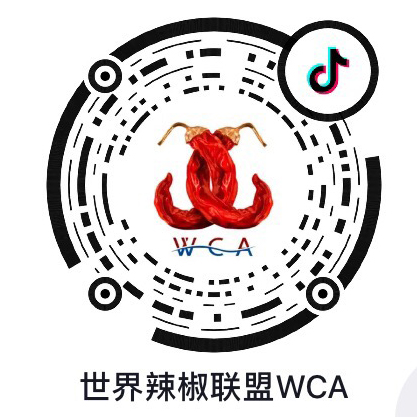Yunnan along the Tea-Horse-Road – On the Trail of Chilli
date:2019-09-26 views:2591Kunming, Dali, Lijiang, Shangri-La: People usually go there to relax, enjoy the natural scenery and the ethnic minority culture. Yunnan food is also a draw. The chilli sure isn’t.
Ask anybody what they think of Yunnan food, and the diversity of ingredients will come to mind. The variety of mushrooms alone. Maybe the hint of spice that one often finds in Yunnan cuisine. It is not particularly renowned for a special spiciness, though.
The Tea Horse Road and Chilli
Gerald Zhang-Schmidt, science specialist for the World Chilli Alliance, was attracted to the Tea Horse Road for a spicy reason, though.
This old trade network may well have played a role in the spread of the chilli into the Himalayas. It ran from Pu-er (of the famous brick tea) via Dali and Lijiang past Shangri-La to Lhasa (and on into India or possibly even through Afghanistan and Iran to form a Southern Silk Road).
The chilli is said to have come to Yunnan comparatively late. Research that investigated the mention of chilli in local gazettes only accepts its appearance in 1894. Earlier mentions (from 1736 and 1739) are considered unbelievable because the plant described in them is said to have grown for 6-7 years, not as an annual (as the chilli usually does, if only because frost kills it).
There have, however, been mentions of Yunnan’s xiaomila (“little rice hot”, i.e. little rice chilli) growing wild in the (sub)tropical forests of Yunnan. And, even stranger, but also even more fitting: There were hints of a yellow Tibetan chilli that grew on large bushes that survived over years, deeper in the Himalayan foothills north of Shangri-La.
Yunnan
Time for the Red Hot China book research to go and look closer.
Kunming
First stop, Kunming and the Zhuang Xin Wet Market there.
The diversity of vegetables was immediately apparent.
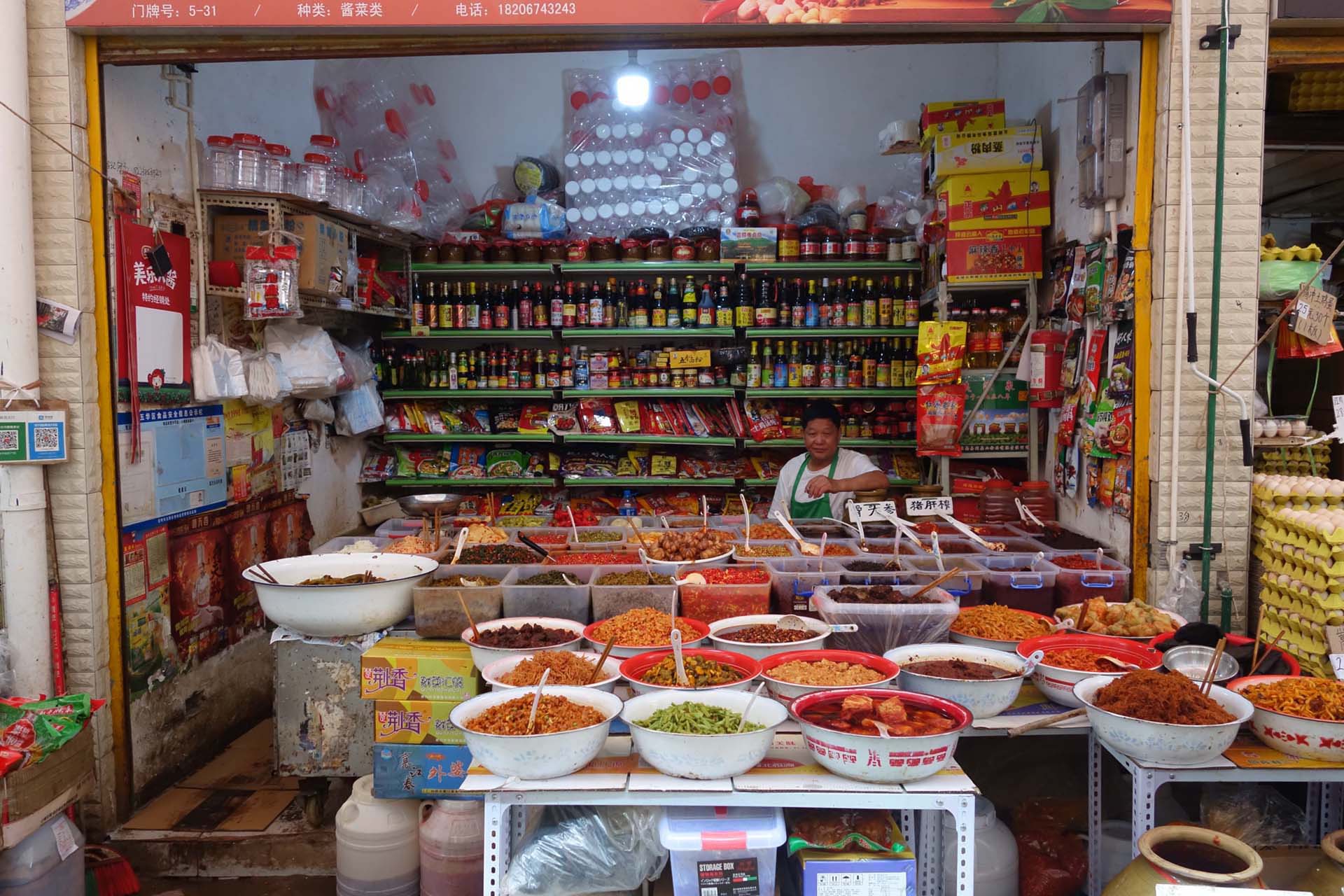
Eggplants and cabbages are easy enough to recognize, but then we (Gerald and his assistant, Mason) stood in front of a pumpkin that didn’t really look like one. We encountered what are apparently the flower stalks of a plant – but of what? The fabled diversity of mushrooms and fungi was also easy to find.
Looking for breakfast, we found a place on the market that served douhua (“tofu flower”, also known as “tofu brains”). This is often a part of a breakfast. In the North, with soy sauce. In the South, with sugar. But here, with rice noodles and spicy, with a chilli sauce.
And, among the various rather usual kinds of chilli was a favorite from Yunnan, one of the few Chinese chilli varieties that are utterly distinct and given their own peculiar name: zhoupi lajiao.
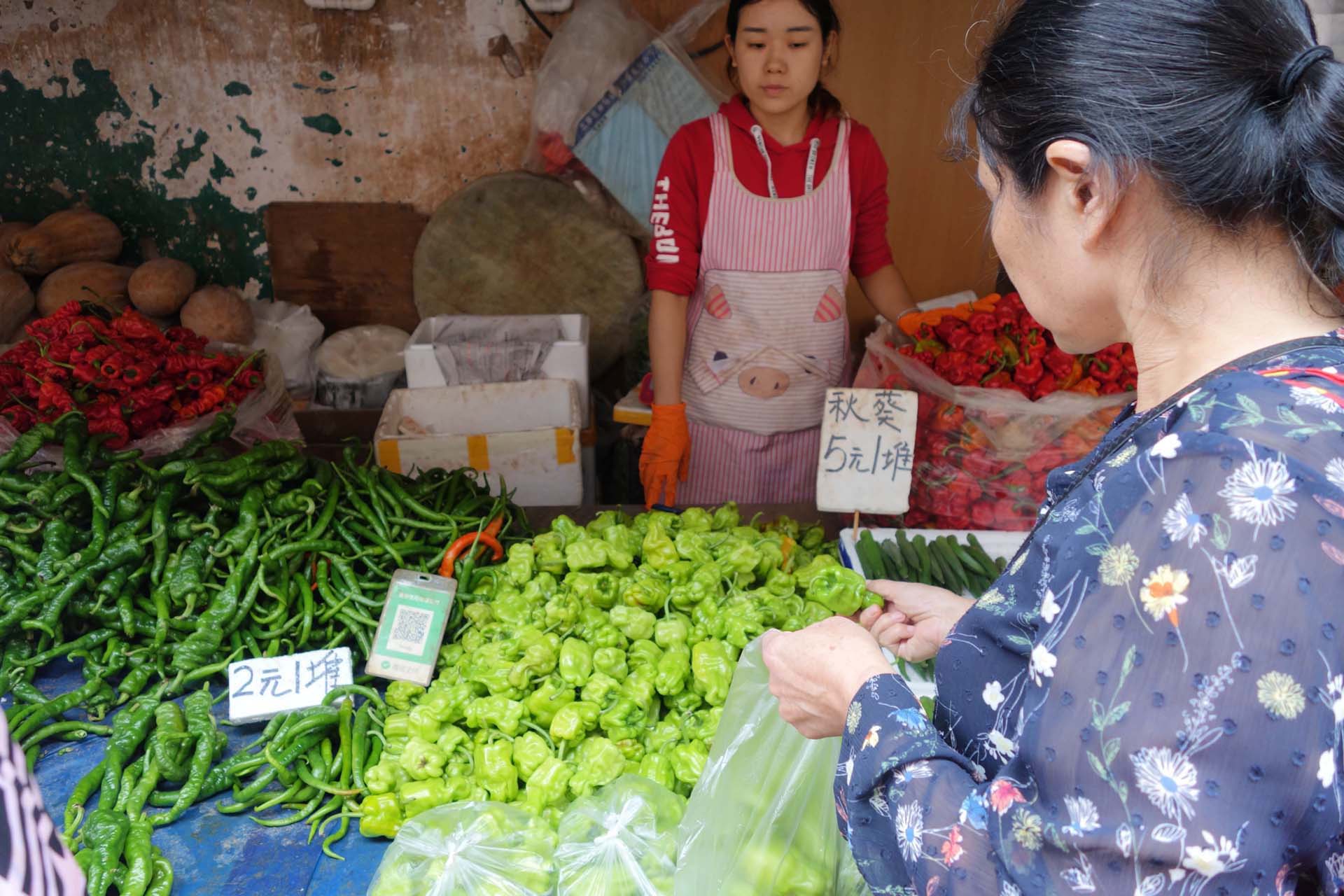
This “wrinkled skin pepper” is exactly as the name implies. It looks like someone folded it all along its length. Here and now, it came in different shapes, though, some smaller and wrinklier, some longer, some wider.
Dali
Dali did not show much chilli, though the Bai ethnic minority food did have its spicy flavors.
On the way out of town, though, there was suddenly a bamboo tray of small chilli (and some ginger) drying in a gap between houses. The place only looked overgrown with weeds.
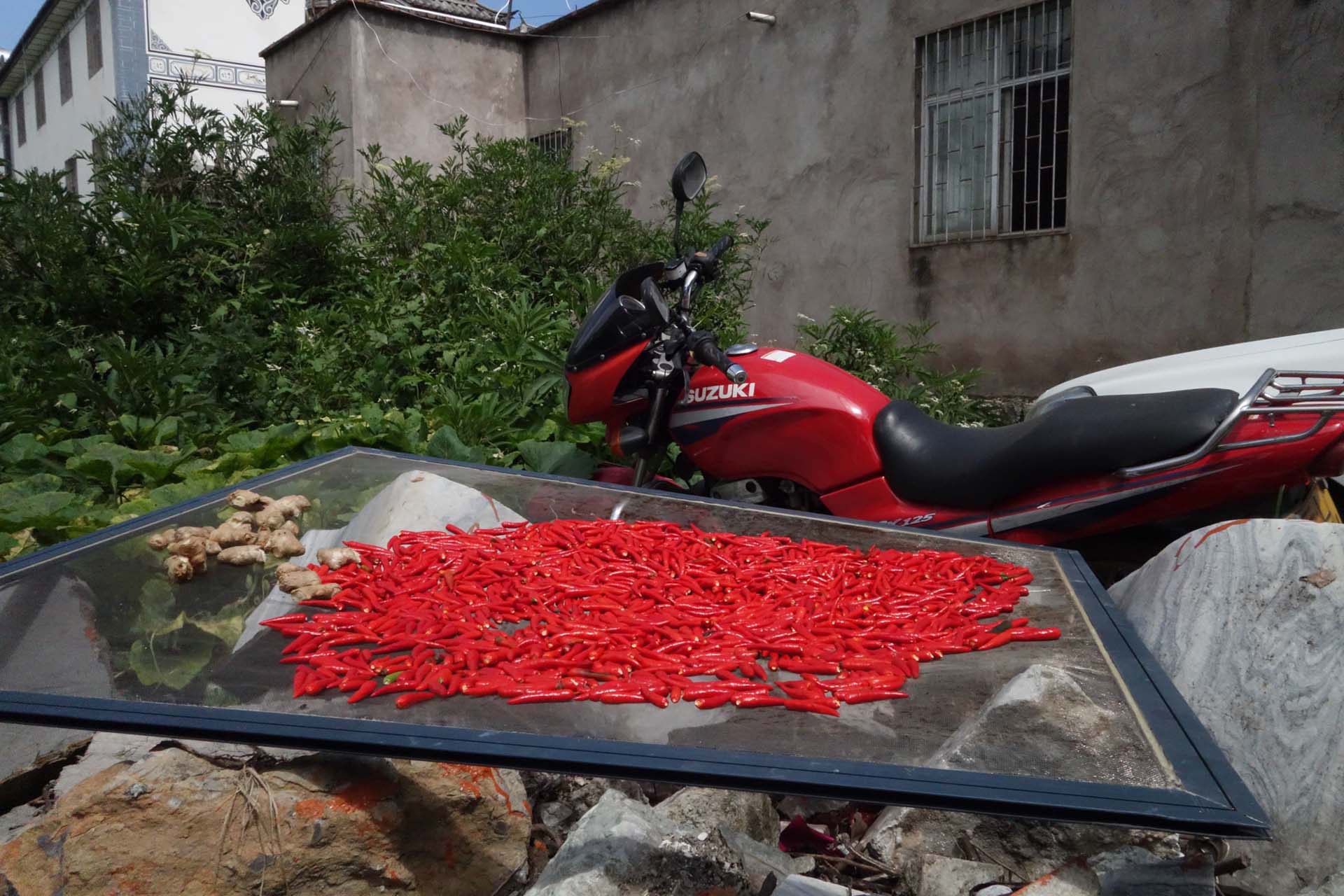
But lo and behold, in between some vegetables, chilli beckoned – and as Gerald charged towards it, a guard dog chained up there charged towards him. Okay, no closer look at that chilli, then.
Lijiang
Lijiang’s old town. Some people love it, some people hate it. Some people come for romance, some for affairs – and some apparently attracted to the mystique of the love-suicide that is said to have been a tradition of the ethnic minority that is dominant in Lijiang, the Naxi.
The driver of the taxi we had taken in Kunming told us that a couple had committed suicide by jumping from Lijiang’s Yulong Xueshan (“Jade Dragon Snow Mountain”) not long ago.
In other words, not a place for chilli.
Although, when you are as much in love with it as Gerald, you find it in the strangest places. Not only the handful of places among all the souvenir shops that sell chilli sauces. But also among the plants being grown on the sides of the cobblestone streets and on the edges of some of the canals that flow through Lijiang’s old town.
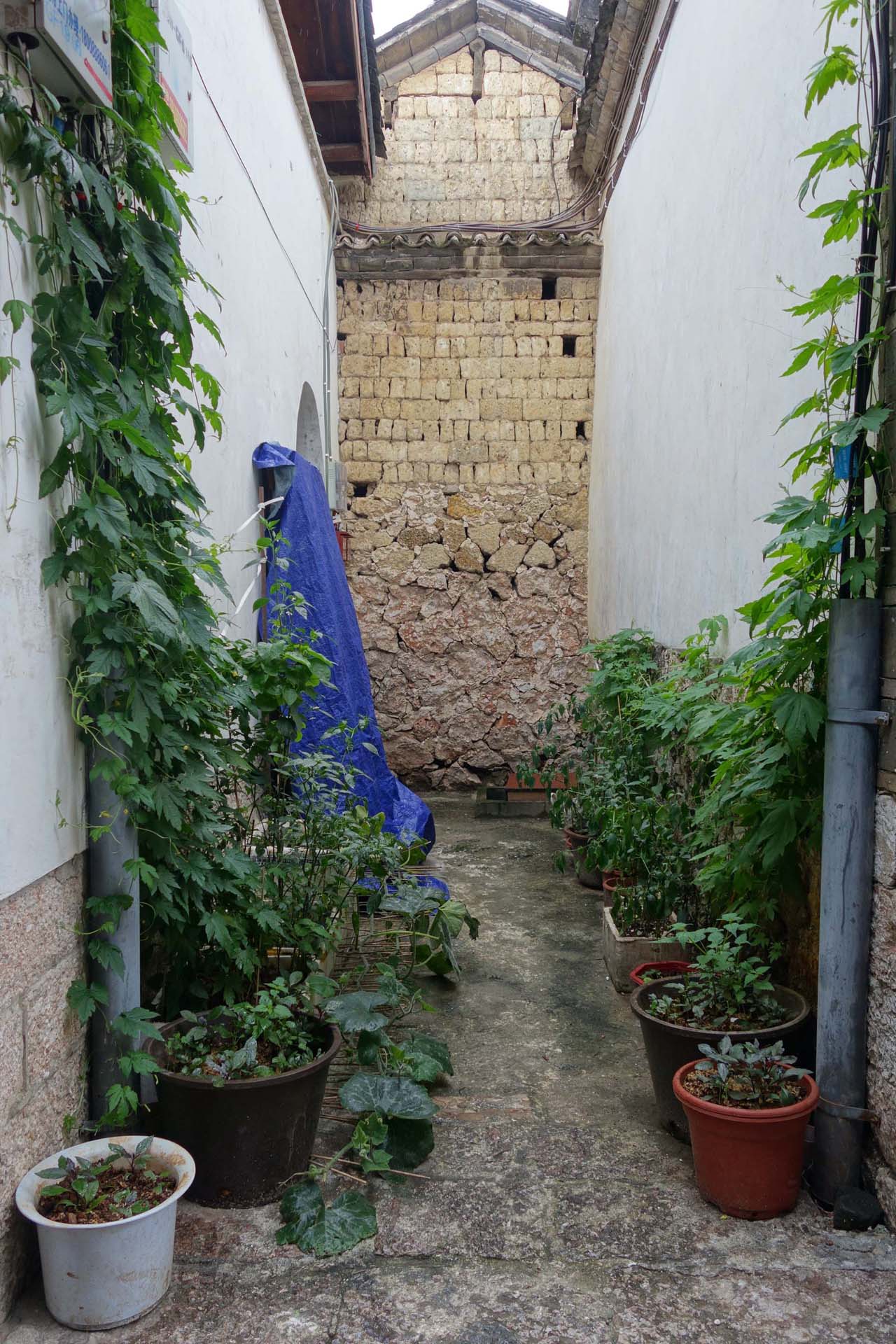
In a little gap between houses, there was a veritable gardener’s patch of vegetables. Bitter melon climbing up the wiring left and right, pumpkin sprawling along the ground, a bit of ginger and scallion and lots of yecai (“wild herb/vegetable”, better known by its Japanese name as handama or also as Okinawa spinach) alongside yet more chilli. All just in pots and boxes. This time, without a dog guarding it.
Shangri-la
Xianggelila, i.e. Shangri-La, the town formerly known as Zhongdian, didn’t look like a place for chilli. At nearly 3500 m altitude, it was cold. Heavy rain caught us for good (bad?) measure. It was a good introduction to Tibetan food, though.
Tibetan food is hearty and simple. Some carbohydrates, at the most basic in the form of tsampa, barley flour mixed with butter. Many dishes with meat. Smiles when asking about spicy foods. “Spicy? No, Tibetan food isn’t spicy.”
It may not be spicy per se, but there is quite a bit of chilli.
Yak meat can come to the table fried crisp, in a bed of whole small chilli. Momo, beef-filled Tibetan dumplings, are dipped into a chilli sauce. Marinated beef, served cold, comes with another dip made of chilli and scallions. And, having asked the restaurant’s proprietor to see if he would spill any secrets: barbecue sauce! That most basic staple of barley flour tsampa? Also comes with a chilli sauce to dip it in.
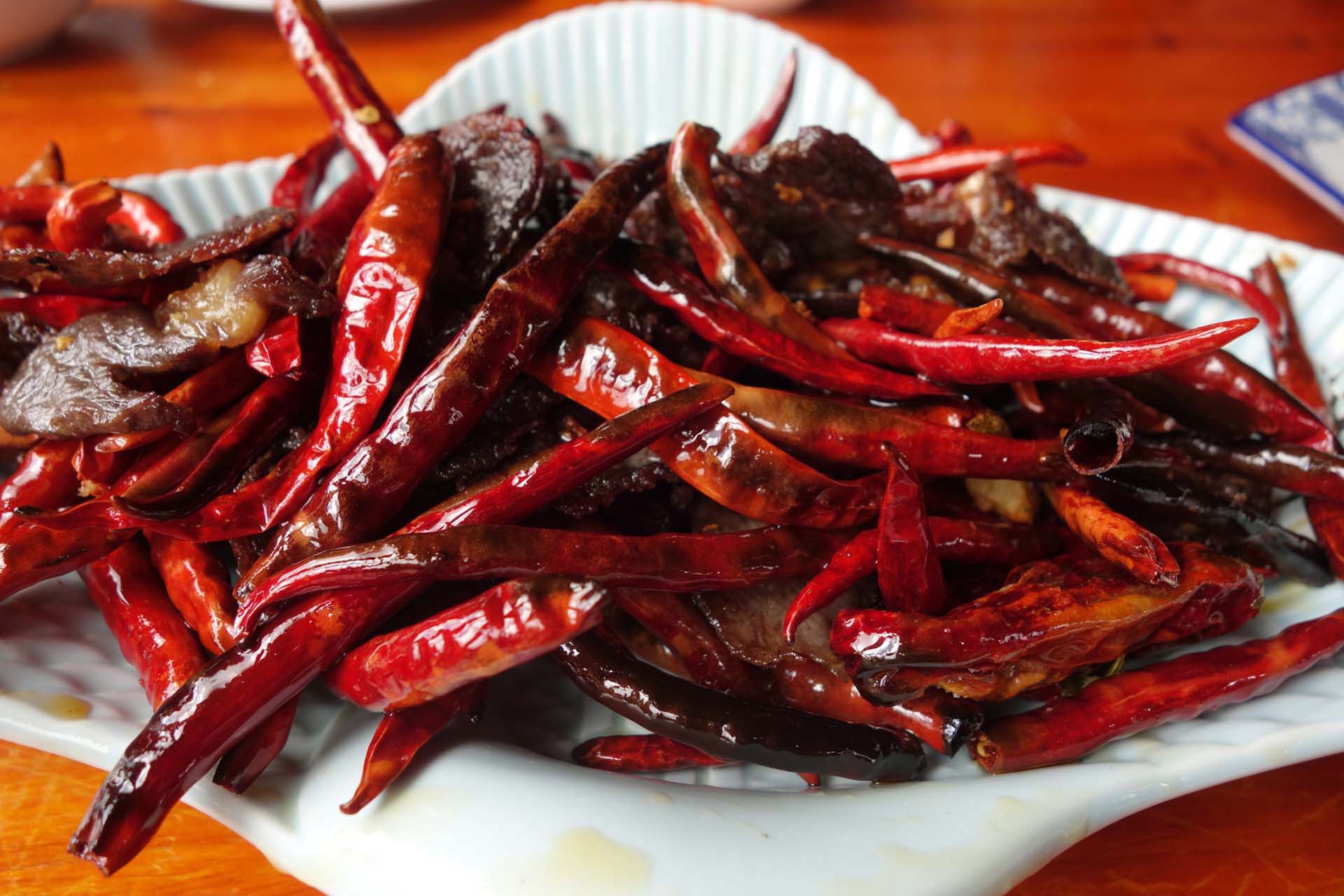
The elusive “tree chilli” that we had heard about? Somehow people here seemed somewhat aware of its existence, but very unsure about it. How were we going to find it?
Searching for the Tibetan “Little Tree Chilli”
We knew of one place, a little village in the mountains near Nixi, where a chilli documentary film showed it to grow.
Taking off in a rental car on the road to Lhasa –“Five to eight hours and we could be there!” “Yeah, and end up in jail because I don’t have a permit to travel into Tibet!”– felt rather strange. On such little information, even more so.
Up a Mountain
It didn’t help the feeling that we had GPS. It suddenly told us to turn off the highway onto a road that snaked its way up into the mountains, barely wide enough for our car. No car around anywhere. Good for driving safely, not good for feeling any safer.
In the village, signs of construction work, trucks with heavy loads… and hardly anyone around. The police station where someone suggested we could ask: One door locked. The other door, open, a TV turned on inside, but no one around.
Then, though, there was that young woman from a small restaurant who said that no, they don’t grow any chilli there, but she knew the place. We just had to follow the main road a bit farther, to just before a place she named.
Down the Jinsha River Slope
Back down to that highway, following its winding path up on the steep slope of a river valley. Vistas both wide – at least the long way down to the river – and locked in by the mountains left and right. Suddenly past a sign that had said something about a chilli, and Mason turned off the highway onto a path that was more of a footpath than anything for a car.
Down further along the long, steep slope to a few houses.
Out of the car to see if the few fields that were visible could possibly be a place where chilli is growing, in an area that looks so dry and infertile all around. Opuntia cactus and other spiny shrubs the major vegetation, only a bit of maize recognizable otherwise.
Chilli! Himalayan Chilli!
Walking past a rock wall on the side of a road, reinforcing the ground on which a house stood up above, chilli hung down. And not just any chilli. Not even just the golden-yellow chilli we had heard about.
There was a scarlet red chilli a lot like what is traded as Lhasa pepper. And the bell-shaped chilli that is like a Brazilian starfish pepper. Or like the chilli that is being traded as Nepalese bell. Names of chilli being as they are, it was never so certain if a type of chilli like that was really grown in Nepal – but here it was, in the Tibetan area of Yunnan, on the path to Lhasa (and Nepal and India).
Golden Tibetan Tree Chilli
Further down the slope in the terraced fields, having scrambled through the brush and scrawled over rocks, there was the golden tree chilli of Tibet, indeed
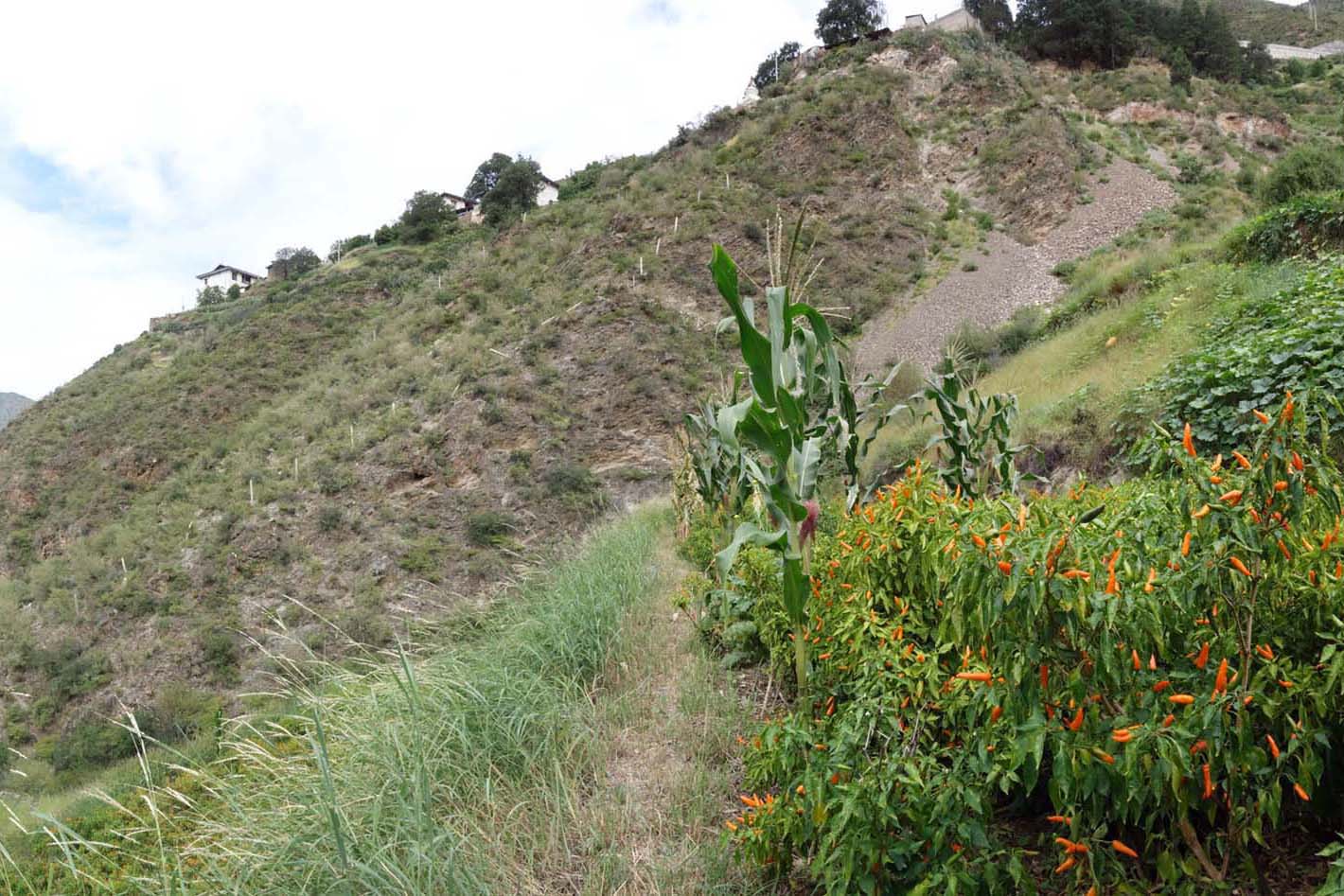
It was beautiful! And the plants clearly showed that they had, indeed, grown for several years, not just as annuals.
How that is possible in an area that looks like it should get freezing cold in winter remains a mystery so far. But then, this is the area of Nixi, which is famous for pottery going back 2000 years.
People have been living here, hard as it looks to be, for long. And maybe there is a little more to the re-naming as Shangri-La than just marketing.






